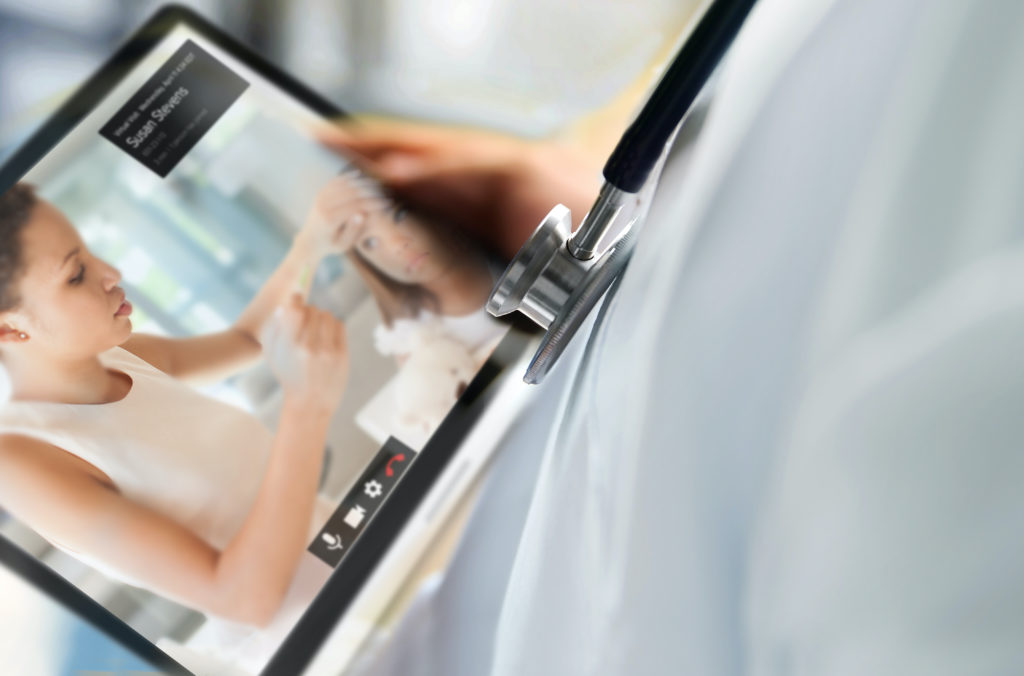As a pediatrician, I became interested in clinical informatics to bring the revolutionary potential of healthcare technology to pediatrics, a specialty where its adoption has sometimes lagged.
Part of this delay is due to the very essence of pediatrics that draws so many physicians to the specialty. While face-to-face interaction with patients is a critical component of medicine, that is especially true in pediatrics. We deal not only with patients, but their families, too. Pediatricians spend significantly more time with their patients than many other specialties. Parents of newborns have many questions and require significant anticipatory guidance, and older children, especially teenagers, often have complex medical and behavioral health issues that require extensive counseling. Technology is sometimes viewed as a barrier — an obstacle between physicians, patients, and families — rather than an asset.
I believe the pediatric practice of the future must embrace a tech-forward approach in treating and communicating with patients and parents. Here are just a few of the technological tools we can use.
Optimized Website
A website is a key tool for pediatricians to grow their patient base. Word of mouth is a powerful force when it comes to growing your patient base. According to the Advisory Board, 55 percent of millennial moms “frequently seek their friends’ advice,” compared to 39 percent other groups. However, their next stop is likely your website. Ensure your website includes an up-to-date address, contact information, favorable reviews, online scheduling, and a biography for parents to “meet” you ahead of time.
You can further optimize your website with patient self-service tools. Consider building a database of forms for new patients, common paperwork, health forms and waivers from local schools and youth sports leagues, and more. Having these in an editable pdf format will allow patients to fill these out ahead of time in a convenient way, saving time and lessening confusion.
Another great web capability is a symptom checker and tracker, such as the American Academy of Pediatrics’ (AAP) Healthy Children tool. Parents can use this tool to gain reliable information from a trusted source rather than finding unclear or misleading information on the internet or social media. Additionally, parents can use this resource to gather information about their child’s symptoms before the visit, which helps to focus appointments.
Accessible patient education materials are another great tool. Subscribing to a vendor’s materials, or partnering with an organization that has a subscription, is a great way to make sure you have a library of information that is easily and remotely accessible for patients. While pamphlets in the waiting room are helpful, providing additional capabilities, such as audiovisual materials, may assist with health literacy, which in turn may boost treatment adherence and health outcomes. Make sure you have robust offerings, like those of the AAP’s Pediatric Patient Education series, which includes well-care checkups, vaccination support, acute care follow-up, and more.
High-Performance Electronic Health Record
When I opened my own practice, my goal was to implement and use technology in such a way that it would allow me to practice medicine the old-fashioned way yet with the most up-to-date technology. Electronic health records (EHRs) can either streamline or clutter a practice’s workflow and efficiency. This is especially true in pediatrics. Unfortunately, EHRs are not always designed or optimized for use in pediatrics. One way to overcome this challenge is through specialty-specific templates, such as Bright Futures Guidelines. These evidence-based templates are a useful tool in delivering preventive care, screens, and testing. As the importance of value-based care continues to increase in pediatrics, standardized templates may help with quality reporting metrics as well.
As I mentioned earlier, face-to-face time is a crucial aspect of pediatrics. Unfortunately, payers do not always reimburse adequately for that time. In addition, pediatrics is one of the lowest-paid specialties since it involves few procedures. In order for pediatricians to spend adequate time with their patients while still seeing enough patients to cover their costs, it is imperative to streamline operations. Since vaccines account for a large portion of both a pediatrician’s time and money, an EHR with integrated vaccine billing and forecasting can help maximize time spent with patients as well as reimbursements.
Finally, the EHR should integrate and sync with telehealth and patient portals. Scheduling and conducting virtual visits through an EHR-enabled system helps to keep information centralized, comprehensive, and accessible for patients and physicians alike. Similarly, patient portals that operate through the same platform as the EHR make sharing appointment notes and securely messaging patients more seamless.
As each generation continues to incorporate technology into their lives more than the one that came before it, pediatricians should follow this same model. We must embrace technology as a critical part of the future of healthcare generally, and the future of pediatrics as well.










Related Articles
How to Keep Your Patients From Skipping Mammograms
Kristin Schraa, MD, with Virginia Women’s Center shares how women’s health providers can encourage patients ...
3 Ways Healthcare Can Integrate Behavioral Health and Primary Care
Integrating behavioral health with primary care can lead to better patient outcomes — but how ...
How Can Physicians Support Postpartum Mental Health?
On average, 13 percent of mothers in the United States will develop symptoms of postpartum ...
Engaging Patients in Annual Mammograms
Studies show that a little over 66 percent of women aged 40 and older get ...
What Do Medicare-Aged Patients Want in Their Healthcare?
Within the next 20 years, 20 percent of Americans will be 65 or older. It ...
How Health Systems Grow Stronger With Privia Health
Discover how we helped Health First upgrade technology, align physicians, and accelerate toward value-based care. ...